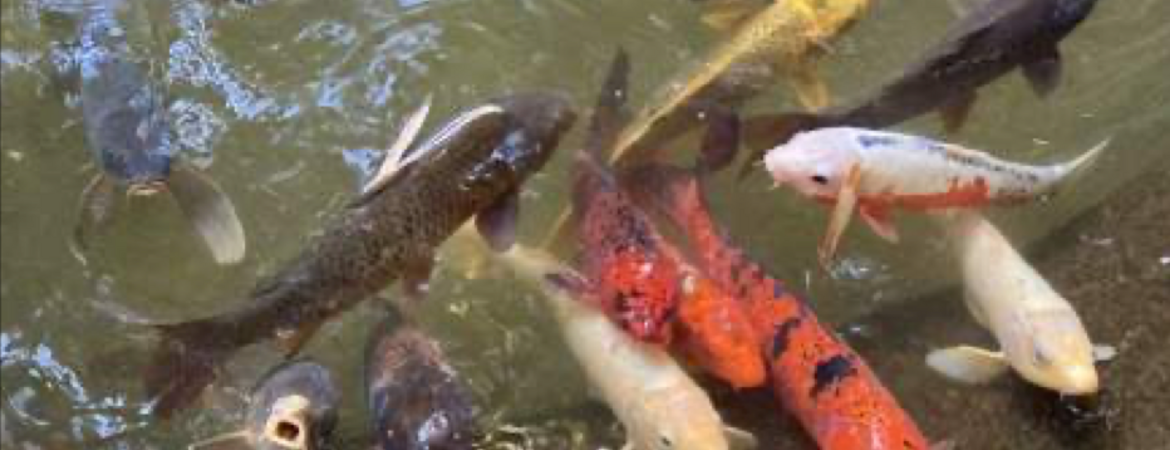
They grace the water of many aquariums, backyard ponds and even lakes. As you stroll past the pond at the UCR Botanic Gardens, look closely and you may catch a glimpse of a Japanese Koi (Cyprinus rubrofuscus). If you take the time to admire their beauty and elegant swimming, you will quickly realize why they have been the symbol of strength, perseverance, love, bravery, and dedication in Japanese and Chinese culture.
Habitat/Diet
Koi are the ornamental variation of a carp species that naturally occurs in the fresh water habitats surrounding the Aral, Caspian and Black Seas. In those habitats, they happily live an omnivorous life, consuming insects, algae and other plants. It is believed that Chinese rice farmers began domesticating these carp around the 4th century. The fish served as a source of food for the farmers. The practice spread to Japan where the farmers noticed the intense color variations that can exist in the species. In the 19th century, Japanese farmers began breeding the fish exclusively for color variation. Soon the fish became a prized possession and were often passed down as family heirlooms.
Breeding
Male Koi reach sexual maturity at 3-5 years old, while females are able to reproduce at 4-6 years old. In the wild, the species can swim great distances to reach the flooded meadows and marshes that will serve as their breeding grounds. Sexually mature Koi will make this journey once a year. Females lay their eggs on submerged vegetation and the larvae will remain in the area until they mature and are large enough to brave open waters.
Identification
Koi come in a variety of color variations. Most come in some combination of orange, red, yellow, white and black. Some are specifically bred to be a single color. Color combination often determines the price tag of the fish. No matter the coloring, this fish is considered quite intelligent and will often form bonds with their human caretakers. It is not unheard of to have a Koi eat out of the hands of their caretaker. Having this bond can be very important since Koi can live 40-50 years, or longer. One legendary Koi named Hanako was born in 1751 and passed away in 1977. Koi can be aged by examining their scales, which grow like tree rings.
Threats
Japanese Koi are a domesticated version of carp and therefore do not face the same threats that many of our native species face. The Eurasian Carp, the species that Koi originated from, is considered vulnerable to extinction within its native range. In other parts of the world, it is considered a non-native invasive species. The International Union for Conservation of Nature actually considers the species one of top 100 most destructive invasive species.